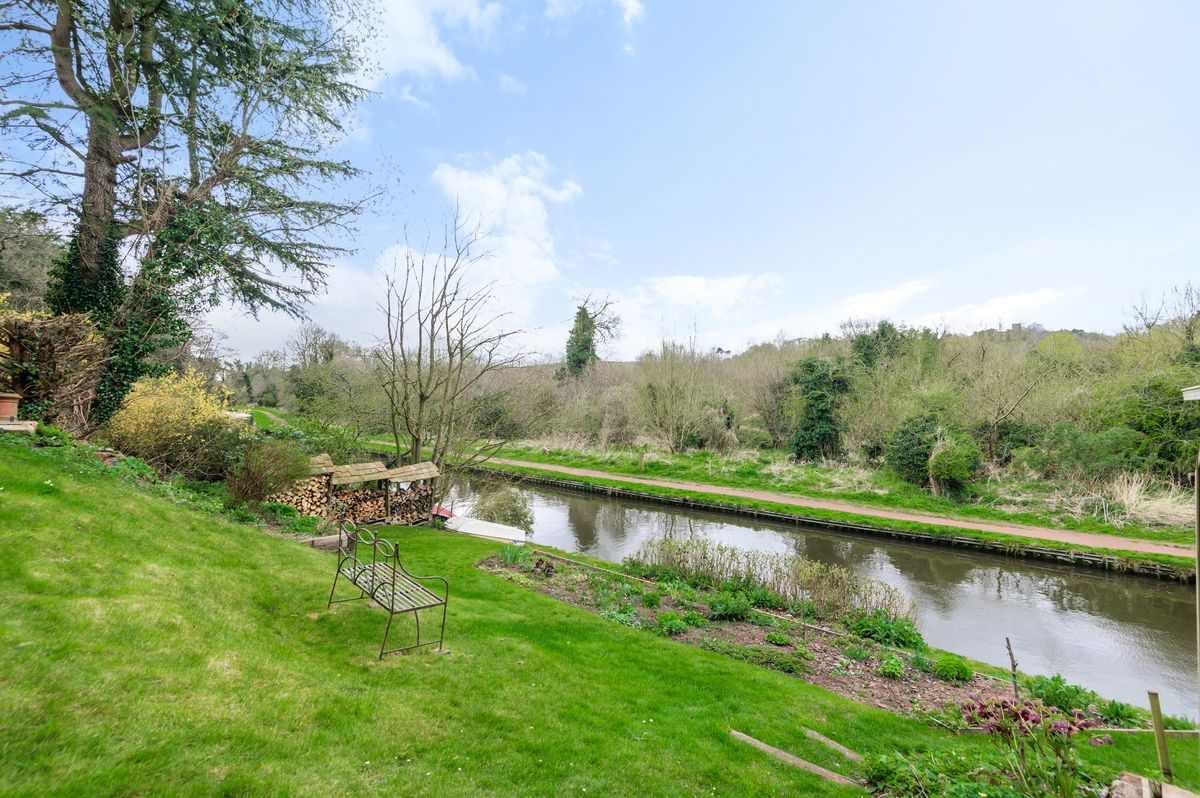Can you moor against your own land?
Here's how to apply to moor on the canal adjoining a residential property or a privately owned plot of land.

On most canals in England and Wales the Canal & River Trust is the owner of the canal bed, and permission is therefore needed to obtain an exclusive right to occupy any water space as a home mooring. To moor on the canal adjoining a residential property or a privately owned plot of land, you will need what is commonly known as an “End of Garden Mooring”. More recently these are being referred to as “A Single Mooring Against Privately Owned Land”. Catchy, eh?
There are separate processes for Boating Businesses, the Kennet & Avon Canal, the Montgomery Canal, and the Lee Valley Regional Park. There is also a separate process “End of Garden Ground Agreement” for property where the owner’s land is separated from the canal by a strip of land owned by the CRT. In these cases a Lease will normally be issued to create a mooring agreement.
Mooring Agreements are issued at the Canal & River Trust’s sole discretion.
In the case of a new mooring, the CRT will carry out a local assessment to ensure that there are no environmental, operational or safety risks apply. As a general rule, a mooring agreement will not be granted if it would be in close proximity to any canal structure, including locks and bridges.
In the case of a renewal, the CRT will investigate to find out whether there have been any changes in the above conditions since the mooring was previously authorised.
Mooring Agreements are normally issued for a single boat on the offside (non-towpath) edge of the navigation.
Permission for more than one boat can only be acquired:
1) for an unpowered portable tender under 5 meters long.
2) as part of a business application.
Any boat and tender must fit within the boundaries of the property and not overlap onto neighbouring land.
The CRT does not guarantee water depth at the proposed mooring, and will not accept responsibility for dredging or clearance of water obstructions.
There is no automatic right of renewal.
Mooring Agreements are issued and renewed annually. Renewal will depend on local strategies and any changes which could make the continued use of the mooring inappropriate.
Some moorings (especially older ones) may have different agreements.
One of the reasons why a mooring application takes so long is that the Estates department may need to investigate the specific mooring rights pertaining to a property. These may include riparian rights (normally found on natural watercourses), or old British Waterways agreements with a lease or a fixed term of X years.
Moorings are not directly transferrable when you sell a property.
Prior to June 2021 this caused grave difficulties for buyers of canalside property. Only the property owner could apply for the mooring, so there was no guarantee of a mooring for the new owner, even where a mooring existed currently, or there was a history of previous mooring. On 10th June 2021 I wrote to the CRT to request clarification on this unsatisfactory situation. The member of staff responsible for end of garden moorings was kind enough to call me back and discuss the matter with me. It transpired that a change was being made at that very moment!
From June 2021, either the seller or the buyer can apply for a mooring in principle.
The new agreement allows house sellers or house purchasers to apply for a mooring in advance of completion. If approved, the CRT will hold the mooring open for 12 months to allow time for sale and completion. On completion, which must be proven via a solicitors letter or copy of the new deeds in the buyer’s name, the mooring agreement will be ‘activated’ in the new owner’s name.
In reality the Canal & River Trust may take longer to grant an End of Garden mooring than the legal transaction takes to complete. They have to carry out searches, feasability surveys and more, before they grant permission. You might lose out on the property long before you establish that permission will be granted. In that situation you have two options: proceed with the purchase at your risk, or make the purchase conditional on getting a mooring. A conditional purchase should be fine with the seller if they are confident that you’ll get permission, but you run the risk that they’ll get a better offer or decide not to sell in the meantime.
You can download the CRT application form here:
Note that the application must be made by post. Send your application to: Waterside Mooring Administration, Canal & River Trust, Fearns Wharf, Neptune St, Leeds, LS9 8PB. The fee is £90 (at the time of writing).
When applying you must enclose a covering letter to say that the application relates to a house sale or purchase, and give the names of the relevant parties, specifying which individuals are the buyers, and which are the sellers.
I wish you the best of luck obtaining your mooring!
